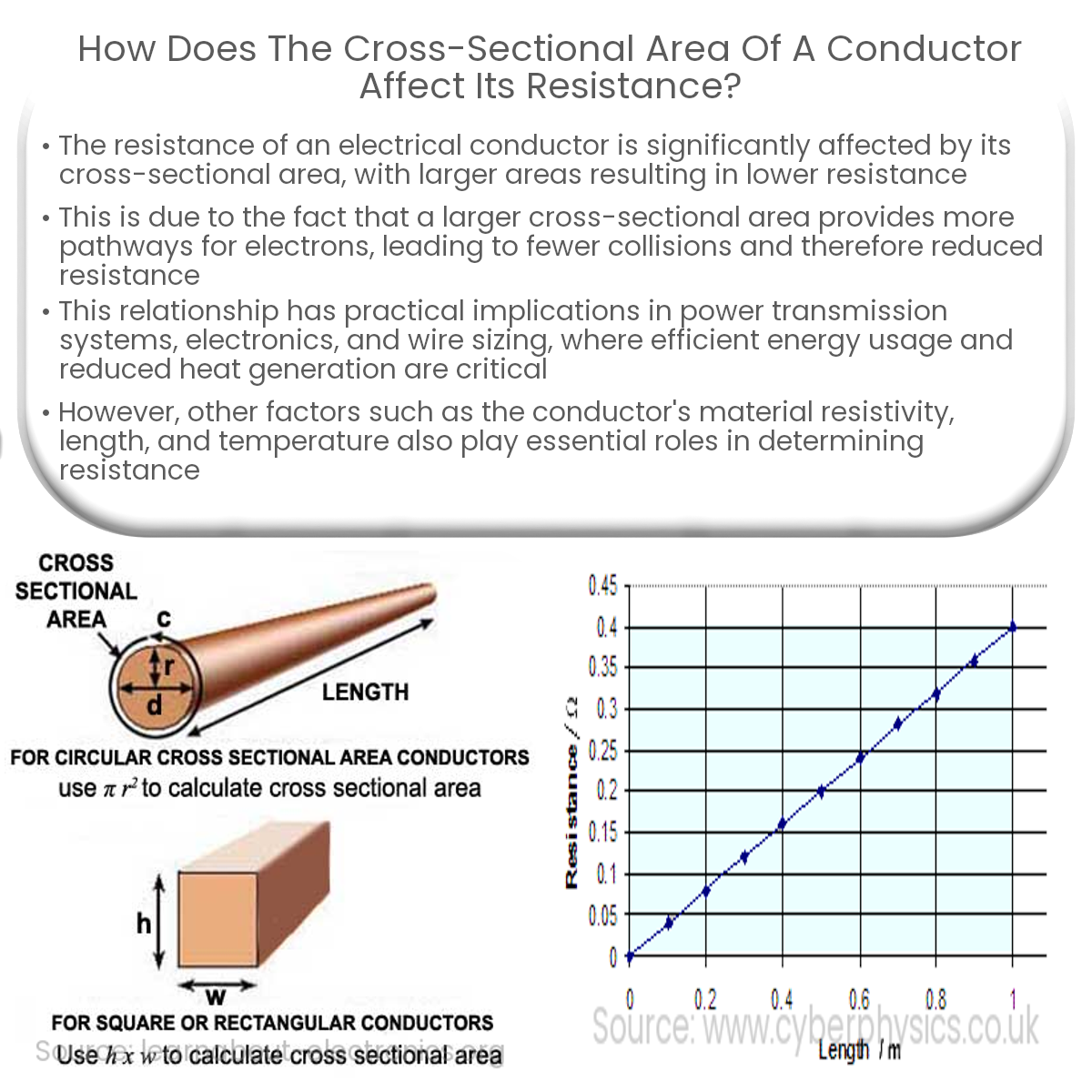The cross-sectional area of a conductor affects its resistance inversely; as the area increases, resistance decreases, leading to efficient current flow.
How Does the Cross-Sectional Area of a Conductor Affect Its Resistance?
Resistance is a fundamental property of electrical conductors that determines how effectively they transmit electrical energy. The cross-sectional area of a conductor is one of the key factors influencing its resistance, along with the material’s resistivity and the conductor’s length.
Resistance and Cross-Sectional Area Relationship
The relationship between resistance (R), resistivity (ρ), conductor length (L), and cross-sectional area (A) is described by the following equation:
R = ρ * (L / A)
This equation indicates that resistance is inversely proportional to the cross-sectional area of the conductor. As the cross-sectional area of a conductor increases, its resistance decreases, and vice versa.
Explanation of the Cross-Sectional Area-Resistance Relationship
The impact of cross-sectional area on resistance can be understood by considering the flow of electrons through a conductor. A larger cross-sectional area provides more pathways for electrons to move, resulting in fewer collisions between electrons, atoms, and impurities. These reduced collisions lead to lower overall resistance and more efficient current transmission.
Practical Implications
The influence of cross-sectional area on resistance has significant implications in various applications, such as:
- Power Transmission: In power transmission systems, using conductors with larger cross-sectional areas reduces resistance and energy loss in the form of heat. This improves energy efficiency and reduces the need for cooling systems.
- Electronics: In electronic circuits, minimizing resistance is crucial to ensure efficient energy usage and reduce heat generation. Designing circuits with larger conductors or traces can help achieve this goal, although space constraints may limit this approach.
- Wire Sizing: When designing electrical systems, engineers must consider the impact of conductor cross-sectional area on resistance to ensure that wires can handle the required current without overheating or experiencing excessive voltage drop.
Other Factors Influencing Resistance
While conductor cross-sectional area plays an essential role in determining resistance, other factors also contribute:
- Resistivity: The resistivity of the conductor material affects its resistance. Materials with low resistivity, such as copper and aluminum, are commonly used as conductors due to their low resistance.
- Length: The length of a conductor is directly proportional to its resistance. Longer conductors have higher resistance, leading to increased energy loss.
- Temperature: The resistance of most conductors increases with temperature, as increased thermal energy causes more electron collisions and scattering.
In summary, the cross-sectional area of a conductor significantly affects its resistance, with larger cross-sectional areas resulting in lower resistance. This relationship is vital for the design and performance of electrical systems and devices.


